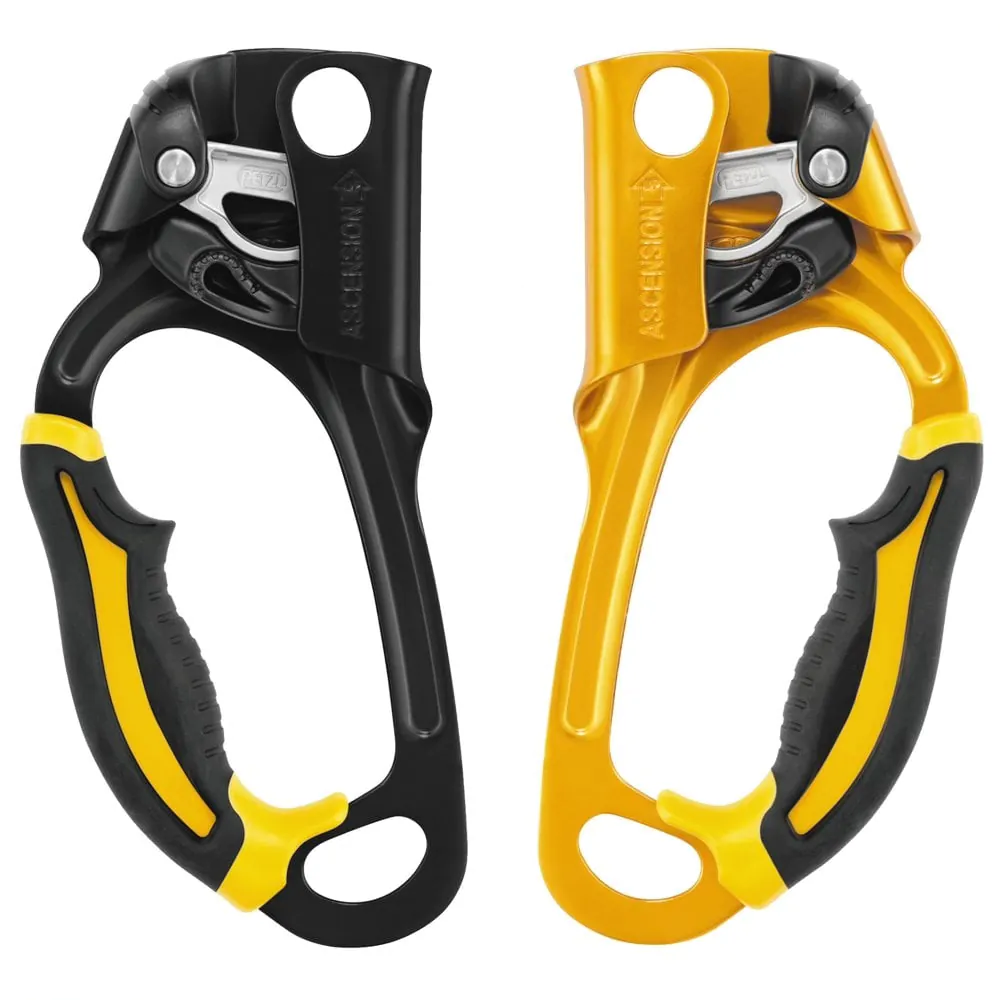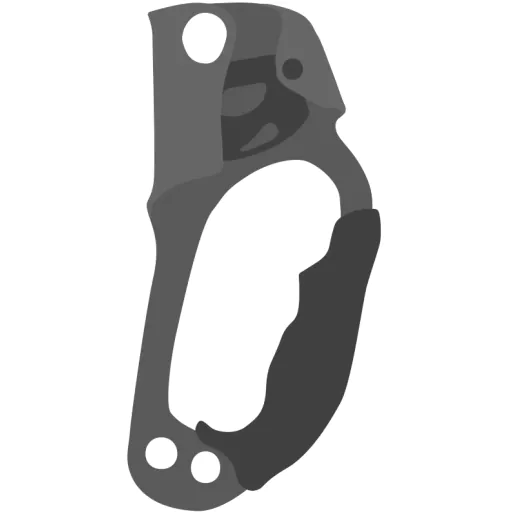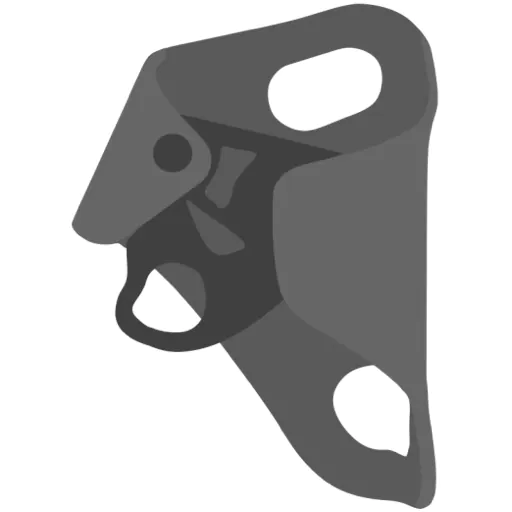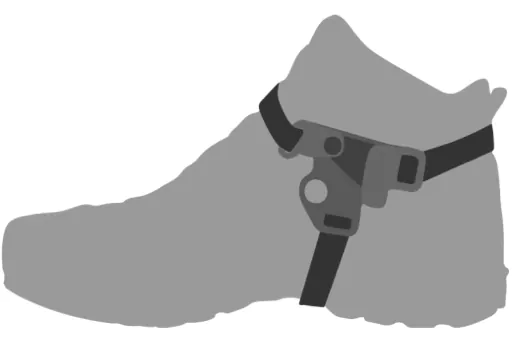Ascenders
An ascender is a mechanical device used for ascending, or for facilitating protection when climbing on steep mountain terrain. Even though ascenders have existed for centuries, with numerous patents from the 1800s, the invention of Adolph Jüsi and Walter Marti (their company Jümar Pangit) in 1958 became so popular it began the term 'Jumar' for the device, and the verb 'to jumar' to describe its use in ascending.
Ascenders can also be used as braking components within a rope-hauling system, often used in rescue situations.
Ascenders are safe, dependable and require less effort in use than the traditional method of ascending and descending ropes using friction knots (prusiks).

hand ascender
The most common ascenders are used manually in hands and are primarily used to climb a rope above the climber, a technique called jumaring or jugging. Hand ascenders are often used in pairs (left and right handed models) with a ladder or foot loop attached to a bottom hole. The foot loop allows the climber to stand on one ascender while sliding the other up the rope. These are the most comfortable and multifunctional type of ascenders.
Hand ascenders attach to the rope via a toothed cam that is spring-loaded to bite into the sheath. A hole at the upper end of the device allows a carabiner to be clipped around the rope.

Chest / Compact / Basic Ascender
Chest ascenders have upper and lower holes for attaching to a climbing harness and chest harness simultaneously. This setup is a useful hands-free solution in caving and rescue situations, and an ideal component of a top rope solo setup.
Ascenders that work as a chest ascender, but can also be pulled on by hand are called compact or basic. These do not have a handle for comfortable grip (like a hand ascender), but instead have an angled top for the hand to squeeze around, which makes using them more difficult in long, continuous ascents. Their benefit is lower size and weight for non-strenuous applications, and they can also work well as a rope grab in a hauling system as they can be added and removed to the rope even under load.

Rope Grab / Capture Pulley
Rope grabs function as multipurpose devices, which are more of a component in a system rather than a standalone ascending device. Due to small size they are often used in crevasse rescue kits, and in top rope solo setups. Some devices in this category also have integrated pulleys, which allows them to function as a standalone hauling system - these are known as capture pulleys.
Many devices in this category have to be opened before using on a rope, making them more difficult to use quickly than ascenders in other categories. Due to very small size, they are more difficult to pull on directly and require a carabiner to function as a handle when used as a rope grab. For better mechanical advantage, they are to be used as part of a system with other pulleys and grabs.


Foot Ascender
Foot ascenders are rarely used by climbers, yet popular in caving, and for ascending trees or structures on a fixed rope. They usually come in pairs, include straps for attaching to the foot, and operate with a cam similar to hand and basic ascenders. They are made to be used together with other PPE devices and never alone. Foot ascenders are not made to catch falls and should never be used as a form of personal protection.
